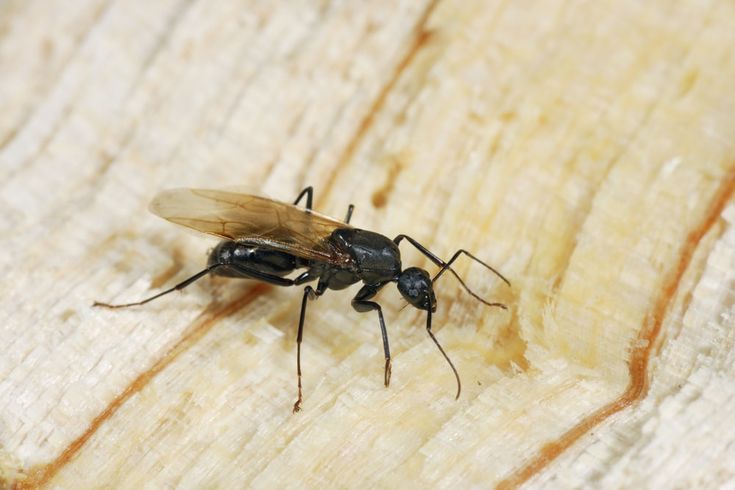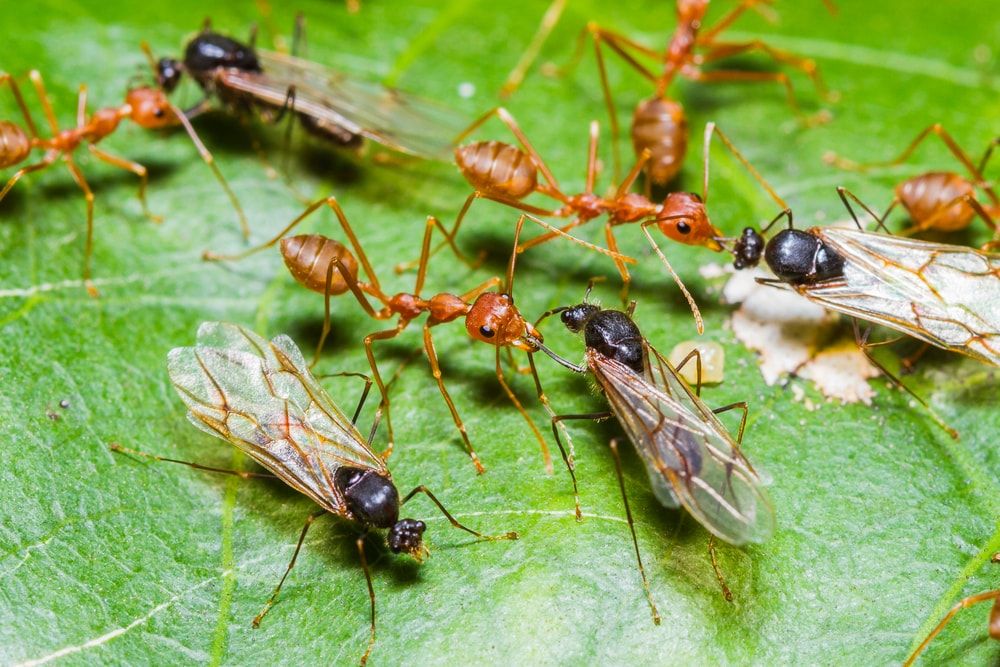Any insect that flies and terrorizes your home automatically falls under the “Must Kill” to-do list. Houseflies, fruit flies and wasps are already bad enough when they invade your home. But now, you’re dealing with ants with wings.
You read that right — with wings.
Ants with wings (aka flying ants) sound like a nightmare, especially when they swarm your home and mate around. They might also seem more intimidating compared to their wingless counterparts. Interestingly enough, ants with wings — also called alates or swarmers — aren’t a different species of ants. They’re just your regular black or carpenter ants with wings!
So, if you’re finding flying carpenter ants or black ants everywhere, don’t panic just yet. This doesn’t mean that you’re about to experience an ant invasion.
What Are Ants With Wings?
Flying ants are not unique ant species. Instead, these are common ants going through a developmental phase. These ants with wings are female and male ants that have reached sexual maturity. These ants with wings fly out of their colonies to find a mate. Winged ants are most active during the warm days of summer and late spring, and their appearance indicates the formation of new colonies.
Flying Ants Vs. Termites: What’s Invading Your Home?
Many homeowners confuse carpenter ants with wings for termites. In fact, some carpenter ants are bigger than household termites. But other carpenter ants can be small, so size is not the best way to determine if you’re dealing with a termite or a flying ant problem.
How do you know if you have a flying ant or termite concern? Look for the following:
- Narrow waists
- Dark-colored bodies
- Hind wings that are shorter than the front wings
- Elbowed antennae
If your unwelcome visitors have these characteristics, they are carpenter ants.
While both termites and carpenter ants with wings are destructive to homes, the two species are different since termites eat wood while carpenter ants just nest in it. Also, frass (insect parts, soil and wood dust) are often found beneath openings to the carpenter ants’ nest.
What Causes Flying Ants in Your House?
So, why do flying ants suddenly appear?
As mentioned above, ants with wings swarm to mate. They need the wings to find mating partners. After the mating season, the males die (since they’ve done their duty) while the queens become wingless when they find a nesting site.

Because of this, if you see an ant with wings inside of your home during the summer could mean that it just flew in from the inside. It will most likely die before it finds a good nesting site, but you don’t have to call an exterminator (just yet). However, since ants are not active outdoors during the winter season, a flying ant inside of your home means that ants are nesting within the house.
Flying ants also swarm homes because they serve as sources of moisture and food, as well as areas for building colonies. Most ant species feed on food that you eat and they love colonizing any dark and hidden area. If you see winged ants everywhere, it means that an established colony is hidden in your home.
Do Ants With Wings Sting or Bite?
For the most part, flying ants don’t care about you; they just want to mate. But these winged ants do have mandibles (mouthparts), which they can use to bite. As for the stinging, it depends on the type of ant that’s near you. Some ant species, like the hypoponera punctatissima, occasionally sting people.
If an ant species don’t sting or bite, that alates of that species won’t either. But if the ant species stings or bites, the alates can do so if they feel threatened.
How To Get Rid of Ants with Wings
Handle the Obvious Swarms
A vacuum — whether it’s a full-sized vacuum or a handheld one — is the immediate solution for obvious swarms. Once you remove the colony with a vacuum, remove the bag and get it out of your home so the flying ants won’t find their way back to you.
Pesticides can easily kill both flying and crawling ants. However, these will not affect hidden colonies, which will continue breeding until your home is infested with ants. Use pesticides carefully if you’re going to spray them indoors. If you’re not a big fan of commercial pesticides, create your own pesticide by mixing dish soap with peppermint oil. Pour a part of this solution into a spray bottle and add two parts of water plus a few drops of oil.
Destroy the Colony
Like with any infestation, the best way to get rid of infestations is to attack the colony. One of the best ways to do so is to set the bait. Ant bait is a mixture of a sweet substance and borax. When the ants take the bait with them to the colony, it kills everyone.
You can also inject insecticidal dust into the colony’s nest. We recommend having a professional handle this method.
Replace Damaged Wood
If you spot a swarm of ants with wings inside of your home — especially during the winter season — there is a high chance that your home is housing a hidden nest. This can be a serious problem since flying ants can also damage the structure of your home.
If carpenter ants are infesting your house, remove and replace rotten and decaying wood under the floors or in the walls, since these decaying materials foster ant colonies. This can be an extensive project, so get in touch with a professional contractor.
How To Prevent Flying Ants
One of the best ways to prevent any ant species from visiting your home is to eliminate sources of food. Store your food in closed containers, and keep countertops and floors clean. Ants love sweet or greasy food. Also, make sure pet foods are stored in tight containers and sweep up any spilled pet foods.
Even if you think the problem has been addressed, there’s always a potential for another infestation in the future. To prevent ants with wings from visiting your home, seal cracks around baseboards and windows. Also, regularly inspect your home for decaying wood. Repair them ASAP. Structural walls near the ground are prone to rot, so make sure to check on these.
When Do You Call a Professional?
When you can’t find where the colony is, you’ll need the eye of a pro. The colony might be located under your home’s foundation or within its walls. If you continue to notice flying ants, call a professional exterminator.
In general, ants with wings are harmless. But if their presence is becoming too much, it’s time to create a strategy against these winged invaders.

